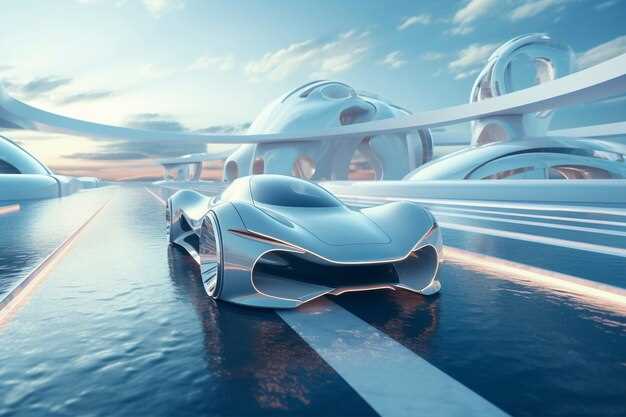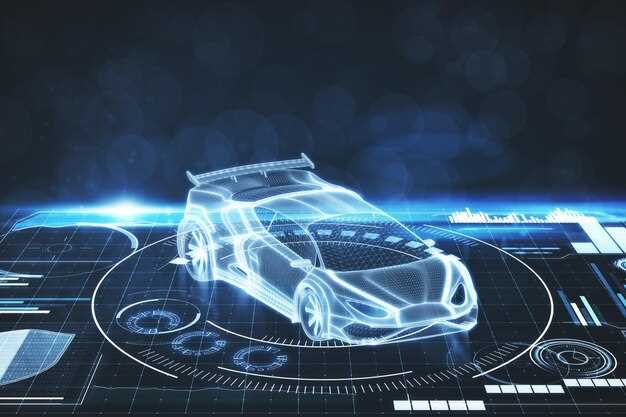
The realm of motorsport is undergoing a remarkable transformation as electric vehicles, particularly Electric GT cars, start to take center stage. This shift not only reflects the urgent need for sustainability in racing but also serves as a catalyst for technological advancement within the industry. The increasing adoption of electric powertrains is challenging traditional norms and pushing the boundaries of engineering, thereby redefining what performance means in motorsport.
As teams and manufacturers embrace this electric revolution, they are innovating in areas such as battery technology, aerodynamics, and energy management systems. The implications of this shift extend beyond the racetrack; the advancements made in Electric GT racing are likely to have a ripple effect across other sectors as well, including consumer automotive design and renewable energy integration. Moreover, the influx of new technologies is inspiring a fresh wave of competition, bringing forth exciting rivalries that showcase the unique capabilities of electric racing.
In this article, we will explore how Electric GT cars are not just fueling a new chapter in motorsport history but are also pioneering advancements that promise to enhance the entire automotive landscape. From the engineering marvels behind the vehicles to the shifts in fan engagement, the impact of electric racing is profound and transformative, paving the way for a more sustainable and innovative future in motorsport.
Technological Advancements Driven by Electric GT Racing
The rise of electric GT racing has initiated a significant shift in the landscape of motorsport innovation. As teams and manufacturers invest in electric vehicles, they are pushing the boundaries of technology, resulting in groundbreaking advancements that not only enhance performance but also contribute to sustainability within the industry.
Battery Technology plays a crucial role in this evolution. Innovations in battery efficiency and energy density are paramount for maximizing range and performance. Electric racing has accelerated research into fast-charging capabilities, allowing vehicles to recharge in significantly less time than traditional fuel sources. This has led to the development of solid-state batteries, which promise to deliver even greater energy storage and safety compared to their lithium-ion counterparts.
Powertrain Development has also witnessed remarkable progress. The electric powertrains used in GT racing are pushing engineers to optimize torque delivery and improve regenerative braking systems. This has resulted in new designs for motors that are lighter, more efficient, and capable of delivering instantaneous power. These advancements not only improve lap times but also inform the development of consumer electric vehicles.
Aerodynamics is another critical area where electric GT racing is making an impact. The unique design challenges posed by electric cars, including the need for cooling systems for batteries and motors, have prompted innovations in aerodynamic efficiency. Teams are experimenting with active aerodynamics that adjust dynamically to optimize performance both on the track and in real-world driving scenarios.
Moreover, the integration of software and data analytics is becoming increasingly vital in the world of motorsport. Electric GT racing leverages advanced simulation tools and telemetry data to enhance vehicle setup and strategy. This data-driven approach allows teams to optimize performance in real-time, providing insights that extend beyond racing and into public road applications.
The shift towards electric GT racing is not merely about the vehicles themselves; it represents a transformation in the entire motorsport ecosystem. Enhanced collaborations among manufacturers, suppliers, and technology firms are fostering a culture of innovation that is set to benefit the wider automotive market. As the electric motorsport scene evolves, it is clear that the advancements driven by these competitions will continue to shape the future of both racing and everyday electric vehicles.
Shifts in Fan Engagement and Audience Experience with Electric Motorsports

The rise of electric GT cars in motorsport has led to significant shifts in fan engagement and audience experience. Traditional motorsport has often prioritized noise, speed, and the visceral thrill associated with combustion engines. However, the transition to electric motors presents new dynamics, reshaping how fans interact with the sport.
One notable shift is the enhanced accessibility of electric motorsports. With quieter races, fans can engage in conversations during events, fostering a more community-oriented atmosphere. This allows spectators to connect with each other and the drivers more easily, creating a more inclusive environment. Additionally, electric motorsports often leverage innovative technologies, such as augmented and virtual reality, offering fans immersive experiences that traditional formats cannot match.
Social media has also transformed how fans interact with electric GT racing. Teams and drivers utilize platforms like Instagram, Twitter, and TikTok to share behind-the-scenes content and real-time updates. This direct communication fosters a sense of closeness between fans and the athletes, encouraging them to feel part of an evolving narrative in the motorsport world. As a result, followers are more likely to engage with teams and events through likes, shares, and comments.
Moreover, the eco-friendly aspect of electric motorsports attracts a new demographic of fans concerned with sustainability and climate change. This shift is not merely a trend but a reflection of changing values in society, driving engagement from audiences who previously may not have attended motorsport events. The narrative surrounding environmental responsibility resonates deeply, enhancing the overall fan experience.
In conclusion, the integration of electric GT cars into motorsport is transforming fan engagement and audience experience in profound ways. As the sport evolves, these shifts will likely continue to redefine the connection between fans, teams, and the excitement of motorsport itself.
Implications for Automotive Industry Trends Inspired by Electric GT Competition

The rise of Electric GT competitions is not just transforming motorsport; it is also setting new trends within the automotive industry. The implications of this shift are profound and multifaceted, influencing everything from vehicle design to consumer preferences.
Key implications for automotive industry trends inspired by Electric GT competition include:
- Advancements in Electric Powertrain Technology:
The competitive nature of motorsport accelerates innovation in electric powertrains. Manufacturers are investing in advanced battery technologies, efficient electric motors, and regenerative braking systems to enhance performance in racing. These developments often trickle down to commercial electric vehicles, resulting in improved range, efficiency, and driving experience.
- Emphasis on Lightweight Materials:
To maximize speed and efficiency, Electric GT teams utilize lightweight materials such as carbon fiber and aluminum. This trend is influencing the automotive industry as manufacturers explore similar materials for road-going vehicles, leading to weight reductions and improved performance in electric and hybrid models.
- Enhanced Aerodynamics:
Electric GT cars prioritize aerodynamics to optimize performance. Innovations in body design, active aerodynamics, and airflow management are becoming essential considerations for all automotive manufacturers, impacting the design and engineering of production vehicles.
- Consumer Engagement and Brand Identity:
The visibility of electric motorsport is helping brands establish a forward-thinking identity. Automakers leverage their participation in Electric GT competitions to attract environmentally conscious consumers and build a narrative around sustainability and innovation.
- Integration of Software and Digital Technologies:
Electric GT is pushing the boundaries of connectivity and software integration in vehicles. The demand for real-time data analysis and telemetry systems in motorsport is translating into a growing expectation for automotive manufacturers to incorporate advanced infotainment and AI technologies in consumer vehicles.
- Sustainability Initiatives:
As the automotive sector places greater emphasis on sustainability, the insights gained from Electric GT competitions regarding battery recycling, lifecycle management, and energy consumption are prompting industry-wide shifts towards more environmentally friendly practices.
Overall, the impact of Electric GT competitions on automotive industry trends is signaling a transformation towards more sustainable, efficient, and technologically advanced vehicles. The lessons learned on the racetrack will continue to shape the future of personal and commercial transportation, pushing the entire industry towards a greener and more innovative horizon.













